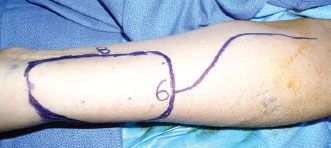FIGURE 20.1 The Mount Sinai classification of palate defects. Class Ia defects involve any portion of the hard palate but not the tooth-bearing maxillary alveolus. Class Ib defects involve premaxilla or any portion of the maxillary alveolus and dentition posterior to the canines. Class II defects involve any portion of the hard palate and tooth-bearing maxillary alveolus and only one canine. The anterior margin of the defect lies within the premaxilla. This class includes transverse palatectomy defects that involve less than 50% of the hard palate. Class III defects involve any portion of the hard palate and tooth-bearing maxillary alveolus including both canines. This class includes total and transverse palatectomy defects that involve more than 50% of the hard palate. (Redrawn from Okay DJ, Genden E, et al. Prosthodontic guidelines for surgical reconstruction of the maxilla: a classification system of defects. J Prosthet Dent 2001;86:352–363.)
HISTORY
I am careful to ask whether the patient has a history of prior surgery or injury to the forearm donor site since this could compromise the blood supply to the skin paddle. Additionally, I always determine the dominant hand so that I can plan to harvest from the nondominant hand to limit the potential impact on the patient’s quality of life.
PHYSICAL EXAMINATION
A physical examination should always include an evaluation of the forearm donor site to establish if there has been injury or prior surgery that may preclude use of this donor site. An Allen test should also be performed to determine if there is an intact vascular palmar arch. The dimensions of the tumor to be excised as well as the anatomic sites to be removed should be recorded. Photographs of the defect should be made to incorporate into the medical record.
INDICATIONS
The RFFF has been the most frequently used flap for head and neck reconstruction since the 1980s. It has been used for nearly every head and neck soft tissue defect that one can encounter. This flap is widely employed due to its ease of harvest, large blood vessels, low donor site morbidity, and potential for simultaneous two-team surgery and for the quality and quantity of tissue available. This donor site has also recently gained popularity as an osseofasciocutaneous flap, useful for reconstruction of composite defects with a small bone component. It has also been previously reported as being useful for reconstruction of subtotal defects of the palate.
Genden et al. (2004) recently described a series of patients with class Ia and Ib defects who were reconstructed using a RFFF. As part of this study, they performed a functional and quality of life comparison with a similarly matched group of patients who used an obturator. They found improved function and quality of life in those patients who had undergone flap reconstruction. The major goal of the soft tissue reconstruction was to provide oral–nasal separation and improve the overall quality of life of the patient. In their series, patients who achieved dental rehabilitation did so by using a dental prosthesis anchored on remaining dentition or osseoin-tegrated implants in the bone of the native palate.
The RFFF is a fasciocutaneous flap best used in the reconstruction of the subtotal palate defect when the defect is classified as class Ia or Ib. In addition, it is possible to use the RFFF as an osseofasciocutaneous flap with the transfer of vascularized bone when the defect requires it. This donor site can also be used in combination with nonvascularized bone grafts. An example of the use of the RFFF as an osseofasciocutaneous flap is in the reconstruction of a premaxillary defect when it is desirable to restore the premaxilla.
CONTRAINDICATIONS
Defects that require extensive bone replacement which is a demand not met by this donor site are contraindications to this technique, as are previous trauma or surgery to the forearm donor site and a negative Allen test.
PREOPERATIVE PLANNING
Prior to harvest of the RFFF, it is important to note that the patient has an intact palmar arch. A clinical Allen test can be done that reliably demonstrates the safety of harvest of the radial artery. It is also possible to obtain a more objective test such as a Doppler Allen test in a vascular laboratory. Typically, this is done only if the clinical Allen test leaves any doubt as to the findings.
SURGICAL TECHNIQUE
The majority of palate reconstructions using a RFFF can be performed using a transoral approach with a neck incision for vascular access for recipient vessel isolation. The pedicle of the RFFF is usually one that easily allows inset of the soft tissue and bony components in the oral cavity with adequate length of the vessels to reach the recipient vessels in the neck.
Prior to harvesting the RFFF, it is important to note that the patient has an intact palmar arch. A clinical Allen test can be done that can reliably show the safety of harvest of the radial artery. It is also possible to obtain a more objective test such as a Doppler Allen test in a vascular laboratory. Typically, this is done only if the clinical Allen test leaves any doubt as to the findings.
The flap is harvested based on the dimensions of the defect of the recipient site. The skin paddle is outlined centered over the radial artery in the distal forearm just proximal to the skin crease of the wrist. The flap can be extended over on to the dorsal surface of the forearm, particularly if one is interested in capturing the distal portion of the cephalic vein in the skin paddle. This ensures that if the caliber of the cephalic vein is adequate proximal in the antecubital fossa, the flap will be adequately drained using the cephalic vein alone (Fig. 20.2).

FIGURE 20.2 Typical outline of the fasciocutaneous RFFF on the left arm, with placement of the paddle laterally to capture the cephalic vein as well as the radial artery.
Stay updated, free articles. Join our Telegram channel

Full access? Get Clinical Tree


